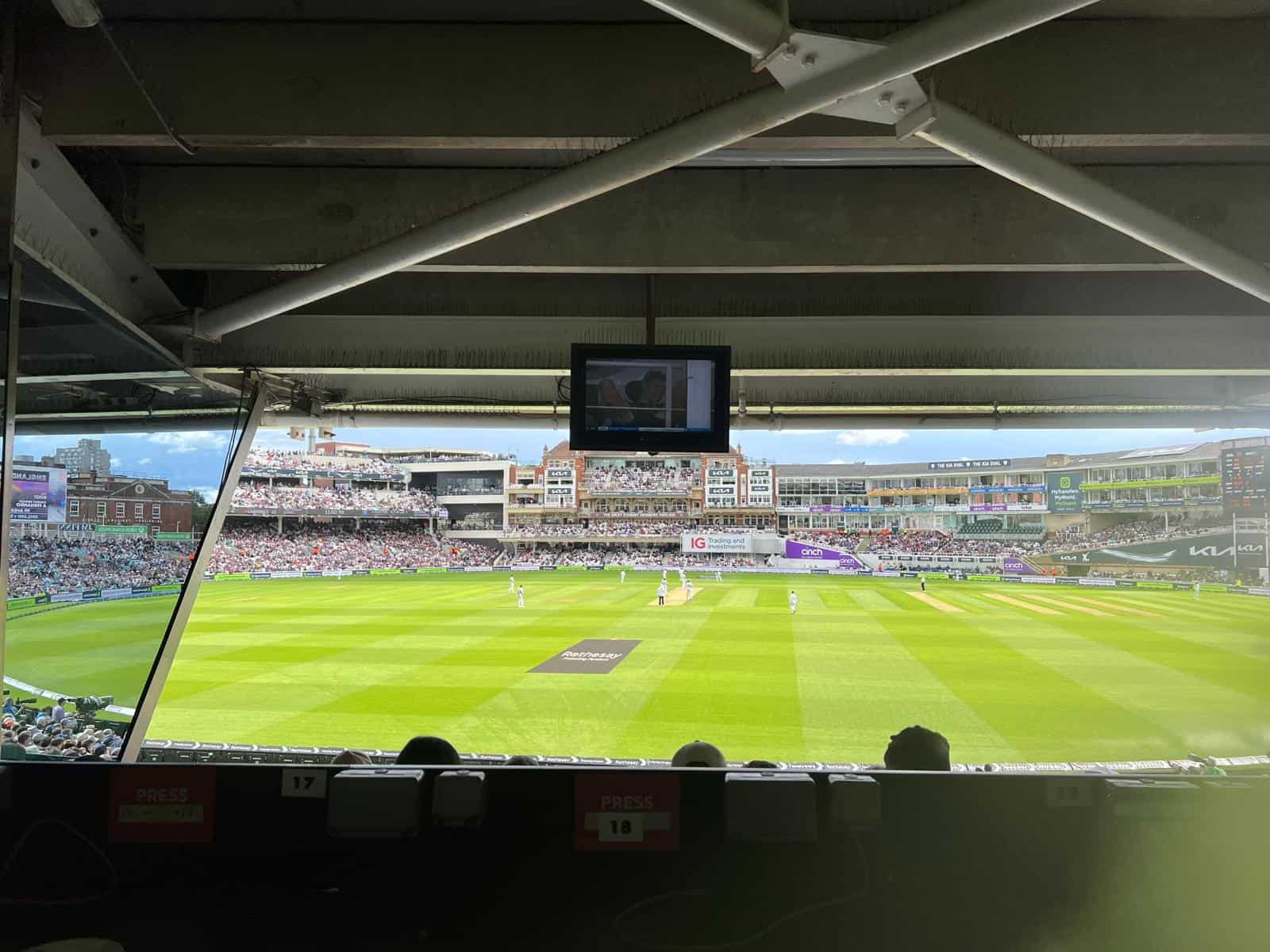An autumnal Oval saw an unexpected conclusion to England’s summer of Test cricket, with Sri Lanka handing out a thrashing to their opponents as remarkable in its way as that achieved by their predecessors in 1998 on the island nation’s only previous visit to Test cricket’s oldest venue.
On that celebrated occasion, Sri Lanka’s captain, Arjuna Ranatunga, won the toss and opted to field. England made 445. Sri Lanka won the match by an innings; Muttiah Muralitharan, who was to become Test cricket’s highest ever wicket taker, took sixteen in the match. After that the English decided maybe these Sri Lankans – who by this time had become World Cup champions – are worth more than one Test per visit.
Dhananjaya de Silva also won the toss and inserted the opposition. He had done that at Lord’s when it was a big mistake. At The Oval, it was the right decision, though it seemed to backfire at the time. Sri Lanka’s pace bowlers were all over the place, and Ben Duckett and Ollie Pope had a field day. But the big difference between 1998 and 2024 was that it was the pace bowlers who won the match. Most unusually for Sri Lanka there were four of them and only “part time” spinners.
England must still be wondering how they contrived to lose this game. When play came to a premature halt on the first day they were 211 for three and Pope had reached a splendid hundred; the umpires decreed that the light was bad, though he was clearly seeing it like a football. England had made 221 for three off 44.1 overs.
They were soon 261 for three on the second morning before Harry Brook fell to Milan Rathnayake. England continued to attack and were all out for 325, losing seven wickets for 64 runs.
Sri Lanka got off to a curious start. The small but polished opener, Pathan Nissanka, overlooked for the first two Tests, ran out his experienced partner, Dinuth Karunaratne, but batted sublimely for 64 off 51 balls. Nobody else could get going and the score was 93 for five when de Silva was joined by Kamindu Mendis. Around this time bad light interfered yet again and Pope bowled his spinners for seventeen overs as the sixth wicket pair added an unbroken 118.
Sunday dawned brighter. I was lucky enough to watch nine days of Test cricket in London in 2024 – including Gus Atkinson’s heroics in two Tests, and Joe Root’s rein centuries, but this day was comfortably the best of the nine.
De Silva fell early and though Sri Lanka fought hard, England gained a lead of 62. As so often in Tests, the third innings was the crucial one. The England top order started as though there were somewhere else they needed to be, and soon. Duckett, Pope and the hapless Dan Lawrence were all gone with 56 on the board off 11.1 overs. By this time the Sri Lankan pace men were bowling seriously well. Andrew Miller of ESPNCRICINFO said he had not seen a better spell of bowling all summer than left armer Vishwa Fernando’s from the Vauxhall end, when he was too good for Root and Harry Brook. (Root struggled all match but he did become the sixth highest run scorer in Test cricket, overtaking Sri Lanka’s Kumar Sangakkara; Root averages 50, Sangakkara 58). When Chris Woakes fell to the persistent and pacy Lahiru Kumara, England were 70 for six.
Then something extraordinary happened which I am sure nobody who was there will ever forget. Jamie Smith smashed an amazing 67 with ten fours and a six; in the course of this innings he made fifty off seventeen balls. “Smash” does not do it justice – these were glorious cricket shots – but somehow no other word will do.
It seemed to change everything. Sri Lanka were left with a target of 219 and the general feeling around me seemed to be that England probably had enough.
Nissanka set off as though he was sure they could get the runs that night. Aided by the gifted if frustrating Kusal Mendis, he took the score to 94 for one in 15 overs when bad light stopped play.
Mendis fell early on the fourth morning but the veteran Angelo Mathews came in and was there when Nissanka hit the winning runs before lunch. Nissanka’s 127 not out off 124 balls was one of the great Test innings. It is relatively rare for an overseas batter to make a fourth innings century in a winning cause in England. He has real pedigree; like Kamindu Mendis he averages over 60 in first-class cricket.
When did England lose the match? Probably in their second innings but their first did not help. At 261 for three they should surely have got 400 at least. Their attitude suggested that they thought against this lot 325 would be enough. Pope virtually admitted as much at the press conference. Brook’s innings was bizarre. It reminded one of the cricket master – not the coach, the cricket master – after nets, grabbing a bat and saying “Come on boys, bowl at me” and trying to whack everything. This is of course an unusually young and inexperienced England side, with only Woakes and Root over thirty.
In his normally excellent Analyst podcast, Simon Hughes said the reason Sri Lanka were so poor on the first day was that they do not care enough about Test cricket. That is deeply unfair. Most people will have forgotten that Sri Lanka were much closer to qualifying for the last World Test Championship final than England were. Somebody else said what a shame it was that this was not a five-Test series. True, but they probably do not know that in all their Test-playing history, Sri Lanka have never played a five-match Test series.
That is unlikely to change. England next go to Sri Lanka after the 2025-26 Ashes; Rob Key told me so it must be true. But they will only be playing white ball cricket.
Never mind, Sri Lanka thoroughly deserved to win at The Oval; and England thoroughly deserved to lose.





3 comments
Piers Pottinger
Tip top analysis Bill. I was pleased to read some positive comments about Sri Lanka. It is important for cricket that Sri Lanka thrives and continues to compete at the highest level. After all the ground at Galle mhst be the most enchanting if all!
Malcolm Merry
Love the cricket master analogy Bill.
William
🙌